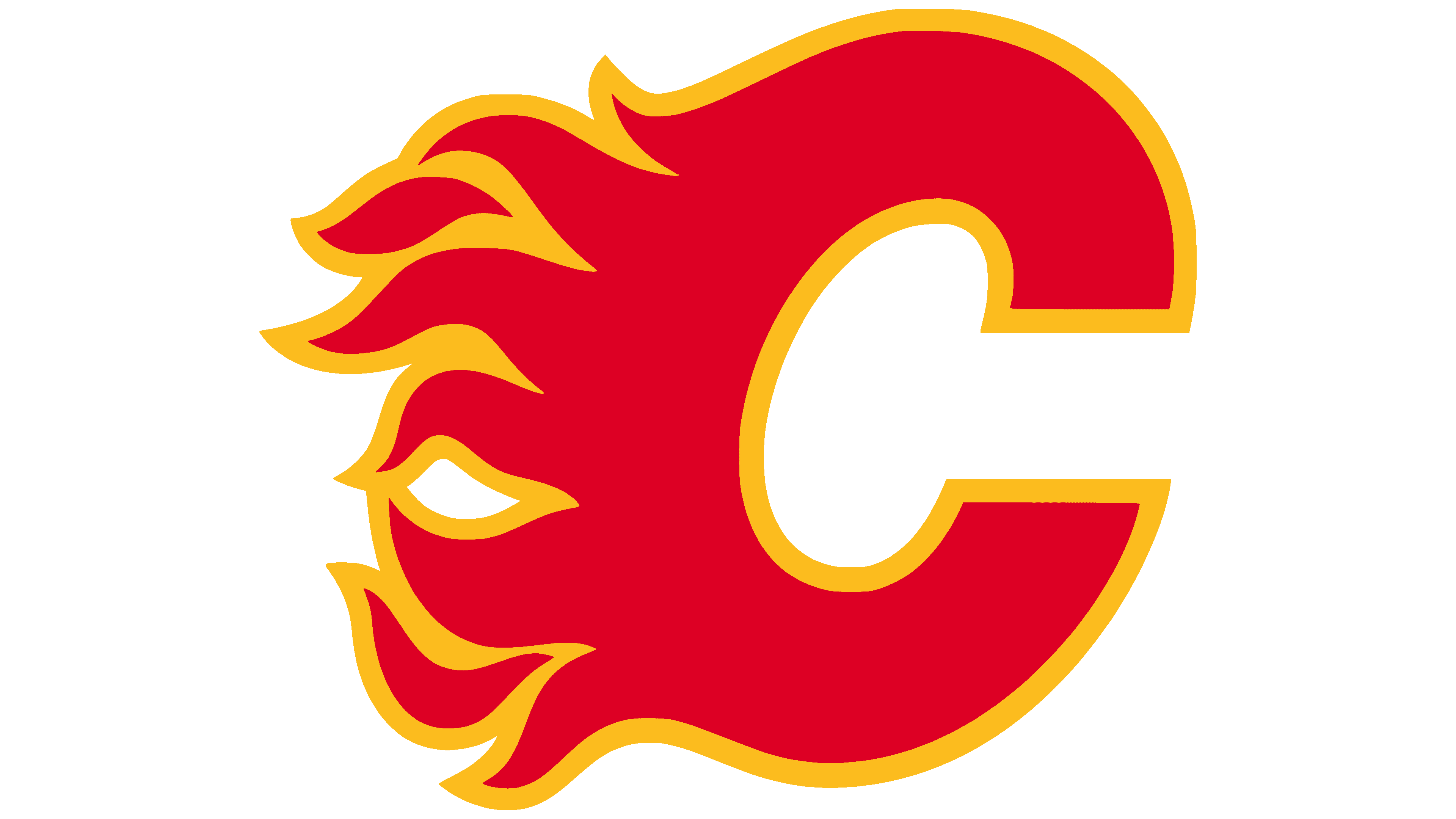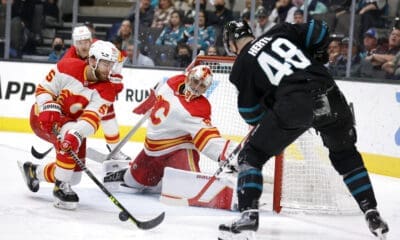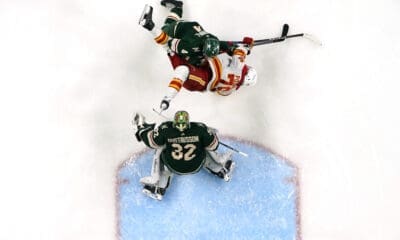Calgary Flames
Calgary Flames vs Toronto Maple Leafs stats recap: Blowouts lead to score effects
The Flames did not have a great fancy stats game. Being up 4-1 after one period had a lot to do with that.

The Toronto Maple Leafs are not a good hockey team. The Calgary Flames aren’t the greatest themselves, but they’re pretty clearly significantly better. I mean, they aren’t yelling at or trying to blame or ship out their best players, they aren’t pointlessly benching them, and they’ve been doing this thing called “winning hockey games” as of late, a concept foreign in the centre to the universe.
It's fun.
Here's the all situations corsi chart from this wonderous 6-3 victory, courtesy of HockeyStats.ca (with a special shoutout to Greg Sinclair from us, who hopefully had fun at the game despite the whole… everything):
The Flames had a great first, and left with a three-goal lead. After that, they dropped off pretty badly. So the 5v5 even strength score adjusted corsi chart should paint a much more accurate picture:
And yup, it does. That giant gap from the all situations chart disappears once we take into account the fact that the Flames stopped laying on the pressure because they didn’t have to. Contrary to the whole tanking narrative, I’m sure the actual Maple Leaf players themselves aren’t enjoying the losing, so they were probably trying to actually score (at least, David Booth sure was). Hence, the Flames didn’t totally dominate them.
But they were easily the better team, even as they stepped off the gas.
Turning our attentions to 5v5 even strength scoring chances, War on Ice pretty much confirms the Flames dominated the beginning, then stepped off the gas as the Leafs attempted to maintain some form of dignity… but still remained the better team:
And looking at the higher volume via the 5v5 even strength shot plot:
The Flames kept themselves pretty tight down the middle, and what with all their scoring from there, why not? Meanwhile, they clogged up the ice in front of Jonas Hiller, laying down the block. Hiller let in a few goofy goals this game, and they were pretty much all on him, as his defence actually worked to alleviate any pressure he faced as best they could. Deryk Engelland led the way with six blocks, while Kris Russell had five.
Onwards and upwards to period-by-period analysis, via NaturalStatTrick:
Flames vs Leafs - All Situations

Flames vs Leafs - Even Strength

Flames Even Strength Data
- First off: just chuck Lance Bouma’s numbers outta there, because he barely even played this game. His possession stats probably wouldn’t be quite so high if his ice time fell more in line with those of his usual linemates (he probably missed out on about 10 minutes).
- Speaking of ice times, look at how even it is across the board. The benefits of being up by so many goals so early in the game: Bob Hartley is totally confident to play his depth players. (Although does anyone else find it somewhat ominous that Brandon Bollig got 9:11 of ice time? No, just me being stupid? I feel like it’s a warning though!)
- This only takes even strength numbers into account, hence Engelland and TJ Brodie playing more than Dennis Wideman and Russell, who are very much still the Flames’ new number one defence pairing. They just ended up spending way more time on the kill. Like, about six minutes.
- Russell was less sheltered than Wideman – usually it’s the other way around – but he always seems to give up more attempts against, no matter what. This time it’s a bit more justified, but this is why I feel Russell is more suited for a bottom pairing role than his regular partner. (This isn’t to speak totally ill of him, by the way. Think of how great the Flames’ defence would have to be to put Russell on the bottom pairing.)
- Please stop playing Engelland with Brodie, he’s killing him.
- David Schlemko and Rafa Diaz were the most sheltered, Schlemko in particular; still, what a great waiver wire pickup. For once, the top four got to take some time off, and Schlemko and Diaz were as worthy of their minutes as anyone else.
- Man, check out the relative stats in particular to see how badly the line of Joe Colborne, Drew Shore, and Mason Raymond just totally bombed. They didn’t even play particularly tough competition (or what passes for tough competition on the Leafs), they just flat out bombed. The low zone starts probably had to do a lot about it… except in Colborne’s case. What the hell, Joe. (For the record, all three parties thrived once Colborne was off the line.)
- Johnny Gaudreau, Jiri Hudler, and Sean Monahan were absolutely incredible. Thank goodness that line is finally a real and consistent thing. Monahan ended up out there for the most shot attempts against, which hurt his standings; meanwhile, Gaudreau was a little machine and Hudler providing the ever-steady and skillful veteran presence. Nice.
- Matt Stajan: Better than the average fourth liner.
- With Bouma out, Michael Ferland ended up spending a lot of time with Mikael Backlund and David Jones. The rookie wasn’t totally up to the task, but he also ended up with the absolute hardest zone starts on the team for some reason.
Player Spotlight - Michael Ferland
It was nice to see Ferland get some bigger minutes as the game went on. During this latest recall stint, he’s only been getting sub-10 minute games, but with a pretty secure lead he was finally able to do a little more out there. (Shame he got cut off by TJ Brennan for what could have been his first NHL goal.)
- Turns out putting a rookie who projects to be more of a bottom six guy on a shutdown line in difficult circumstances isn’t the best thing for him.
- Putting him on the fourth line with easy starting circumstances works out pretty well, though.
- Maybe if Emile Poirier was dressed he would have been a better fit on the Backlund line, but the way things are going, we might not really find out any time soon. I’m sure Adirondack could use him for their playoff push, though.
- Ferland’s not quite at Bouma’s level of playing way above his head just yet, but in fairness, he’s about 170 games behind him, so…
If Ferland turns into a reliable bottom six player – and according to this game, that's pretty much what he was – then that's a pretty good pick for the Flames. Especially considering how he can fight and has the potential to be more of a regular player than a straight up goon.
by Ari Yanover








